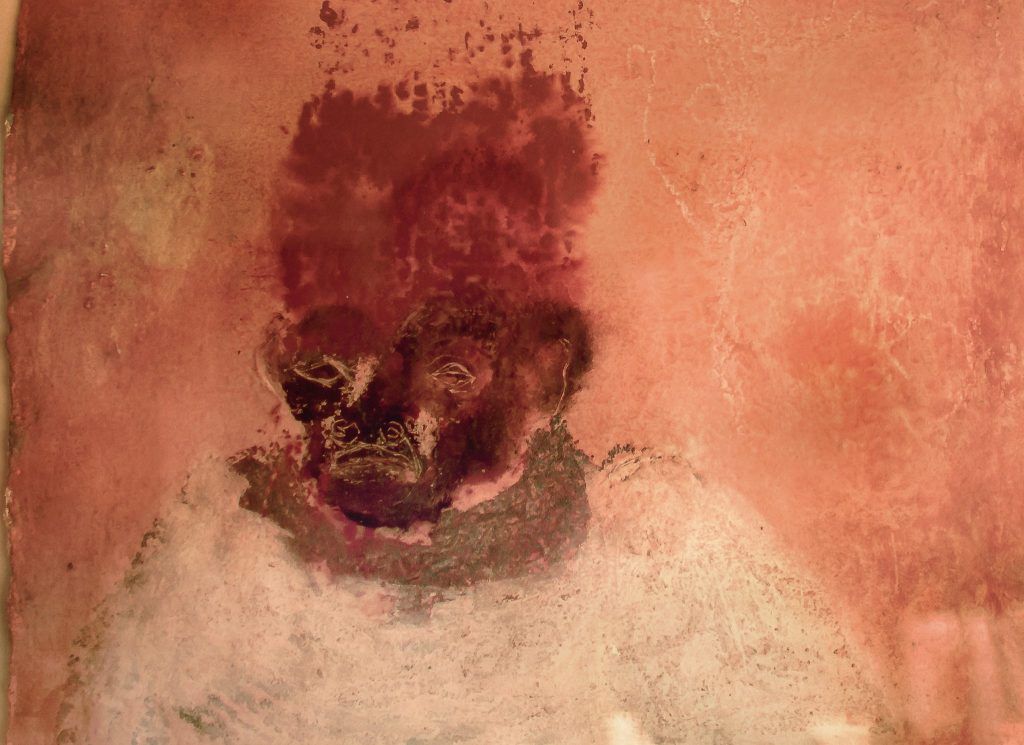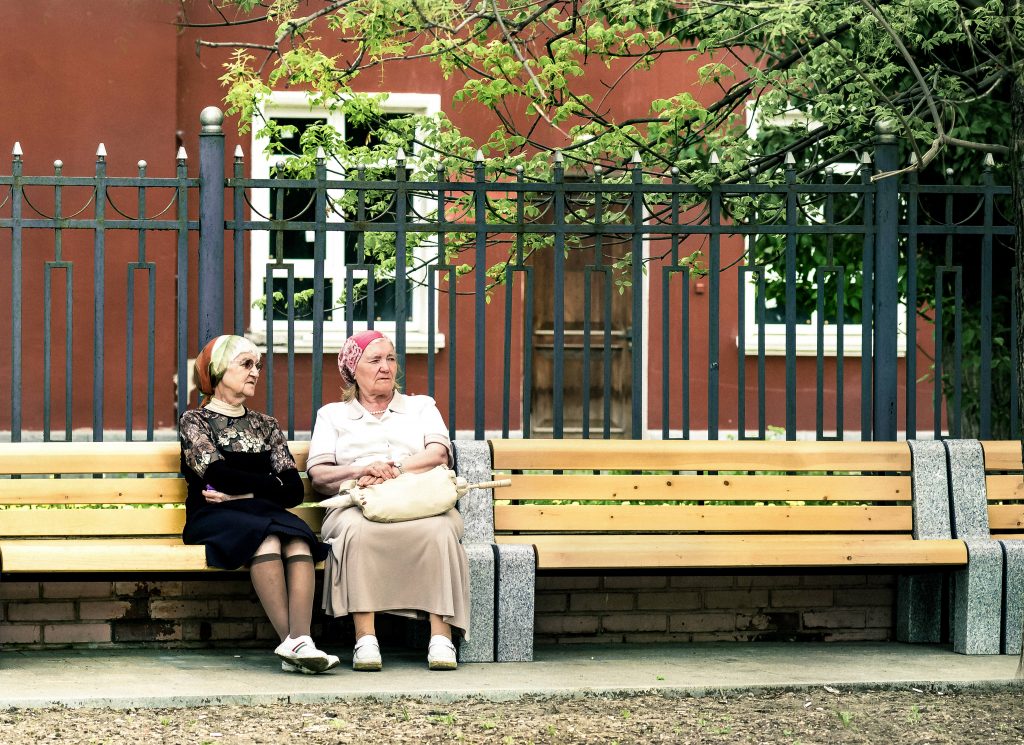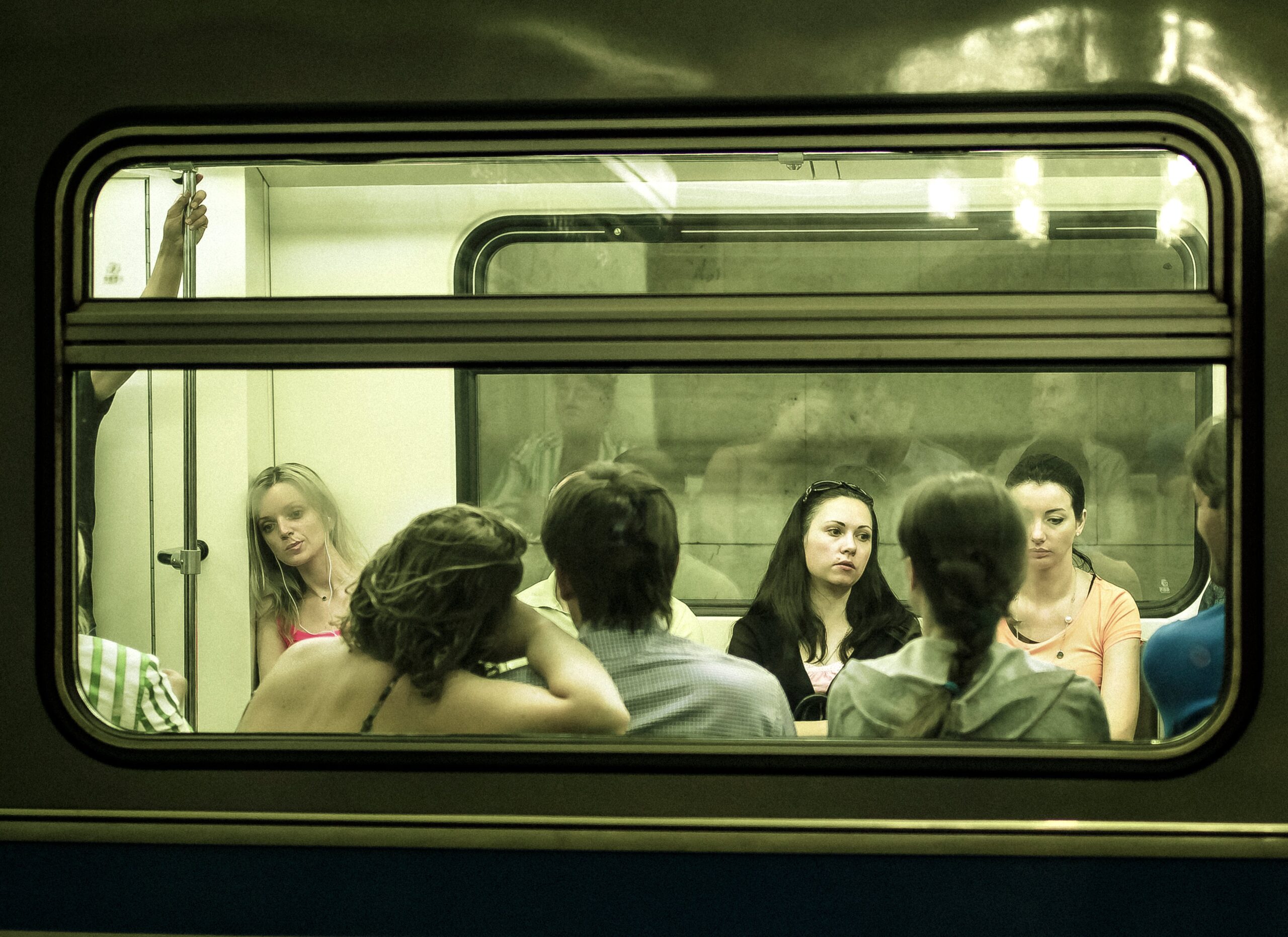The flight on a Cebu Pacific airplane from Manila to Davao on the island of Mindanao took two hours. Inside the plane, all of the flight attendants were female and looked as if they were 18 or 19 years old. We landed in Davao at Francisco Bangoy Airport. I felt tired because I had slept little the night before. The final leg of my journey was almost complete. All I wanted to do was crawl into bed. I knew I had to rest before I could begin my project on Philippine poverty, with a focus on conditions in Davao.
The darkness outside the airplane was broken only by lights along the runway. They were white, red, and blue. When I looked outside a second time, I saw the airport was deserted with no planes parked at the gates, no trucks moving around, and no airport personnel anywhere. It had been raining when we left Manila, but it was not raining in Davao.
The airport was a modern facility but also a small one, with two buildings next to each other by the runway. The airport was 1/2 mile from the center of the city and an equal distance from the Gulf of Davao. A two-lane road, the C.P. Garcia Highway, ran in front of the airport.
After collecting my baggage, I walked to the front of the terminal, got into a taxi, and gave the driver the address of the house in Robinson’s Highlands where I would be staying for five days.

The Bus System in Davao Is Crowded
At that hour, traffic on the highway was light, but close to the business district, a series of cars and jeepneys competed with each other for space on the road. To either side of the highway, people stood in front of roadside businesses. Some of them sat on cartons or chairs and ate from pots or plastic containers.
Davao City, with a population of 1.4 million people, had not made a good impression on me when I visited six months before. The streets and buildings of the city had seemed ugly and old fashioned, but my visit then was short and hurried. On this trip, I would stay longer.
Gia and the Taxi Driver
The next day, still groggy from my flight across the Pacific, I awoke. At 10:00, my guide, named Gia, knocked on the door of my rented house in Robinson’s Highlands, asking if I was ready.
I said, “No,” but she replied the taxi had already arrived. Gia had long, dark hair and wore a blue blouse and grey skirt. She was 33 years old. We went outside and got into a new model Kia sedan. Gia spoke quickly in Visaya to the taxi driver, saying, “Take us to Quezon Boulevard.”
The taxi driver turned in his seat, smiled at me, and passed a small, white card over the seat. It read, “Chuy Isidro, Bay Taxi.” Beneath the name was a telephone number. I glanced at the driver. He did not look a day older than 17. He wore a yellow and purple Los Angeles Lakers jersey.
“Call me at any time day or night,” Chuy said. “My phone is always on. I am always working.”
We turned left onto the highway, and then we turned right on Bacaca Road. As we proceeded, Gia explained the concept of barangays or city districts, each one with its own official designation, according to the numbering system of Davao City. Barangay 23-C was our destination. It occupied a stretch of coast just outside the central business district. It was known for its slums, especially one called Isla Verde.
We passed through an area which the locals called El Rio, next to the muddy, slow-moving Davao River. On both sides of the road there were new condominium complexes. We passed the Dizon Elementary School on the left and the Phoenix Gas Station on the right. Five minutes later, we passed the Bajada Bible Baptist Church on the right and the Davao Alliance Bible College on the left.
Gia Goes Downtown
On J.P. Laurel Avenue, we left behind the residential district and entered the business district. On the left we passed the sprawling Victoria Plaza with its wide assortment of shops and a McDonald’s restaurant. On the right we passed two gas stations and a Nissan car dealership. The cars on the lot were shiny and clean.
Small and large stores alike lined both sides of the avenue. We passed through an intersection with Ramon Magsaysay Avenue. On the left, I saw the northern end of the Ateneo de Davao University, run by Jesuits.
Gia said, “I went to school there and studied economics. My uncle paid my expenses because my father died when I was nine years old, and my mother had five children. We lived in the slums.” Gia looked upset.

At the Cemetery in Downtown Davao
When Roxas Avenue reached the intersection with Quezon Boulevard, Chuy brought the small Kia to a halt. On the other side of the boulevard, a smaller but also paved road continued in a southward direction toward the beach. The sea sparkled as it met the sunlight. It looked idyllic, but I knew it was filled with sewage.
“The plan is to cross Quezon Boulevard and keep moving in a straight line as if we were going all the way to the water where the poor live in the slums,” said Gia. “But we will take a tricycle taxi.” she added. “We’ll rely on a tricycle taxi driver local to find a way through the maze.”
Gia and I walked to the other side of Quezon Boulevard. A lean, middle-aged man wearing only a pair of red shorts and rubber sandals and pedaling a three-wheeled taxi appeared. Gia spoke to him in Visaya, and we got into his taxi.
“Right now, we’re in Barangay 31-D,” said Gia. “We’ll pass quickly through it and then through barangays 21-C and 22-C.” Gia paused. Then she added, “At the edge of Barangay 23-C, where the line between land and sea is blurred, we will enter Isla Verde.”
A breeze came off the water, but it provided little relief from the heat. The day already was humid. Now it was becoming hot. I was glad that I had remembered to bring my wide-brimmed hat. I pulled it lower on my head.
The driver and Gia exchanged words. Gia told me his name was Catalino. “He lives in Isla Verde,” she said. “Catalino is Muslim. But his neighbor, a man by the name of Ray, is Christian. We will visit him.”
Gia Goes to Barangay 21-C
Catalino pedaled in a southerly direction, toward the water. The roadway was paved, but quite narrow. On both sides, I could see businesses. Some were small, no more than doorways into vague spaces. Others were bigger with open fronts, offering portable electronics, batteries, assorted household goods, and children’s clothes.
At the next street, Catalino turned left, and we proceeded to move along the narrow roadway. “Many of the streets in these coastal barangays don’t have official names,” Gia said. “The locals have their own names for them, but I don’t know any of the names.”
A few minutes later, Catalino brought the taxi to a stop. “We’ll cross this street,” Gia said. “It’s the extension of a street called Emilio Jacinto.” Gia paused. Then she added, pointing her right index finger to the right, “If you look over there, you can just see the top of the Piapi Mosque. Look for the mint dome.”
“We’re entering Barangay 21-C now,” Gia said. On the right we passed a large structure. “It’s a basketball court,” she said.

The Lower Class in Davao Lives Under Roads and in Make-Shift Houses at the Beach
At the next intersection, Catalino turned right on another road leading south toward the sea. “This road is the extension of a street called Fatima,” Gia said. On both sides, I could see dwellings and small stores.
Fatima Street led to a cluster of buildings on the beach. At this point, there was a paved road running parallel to the Gulf of Davao. We passed through Barangay 22-C in minutes and entered Barangay 23-C. The place looked like the slums of Manila, equally squalid, smelly, and filled with trash. People had made shelters with materials they scavenged along Quezon Boulevard and other roadways, such as Ramon Magsaysay Avenue and Sales Street. Their clothes were cast-offs.
According to the city government, informal settlements in Davao had reached 13,000 families in 2010, the last year for which official data were released. But officials now say the households have surpassed 20,000 families. The total number of people living in slums throughout the city, as a result, is about 200,000.
Barangay 23-C itself had a population of 15,000. All of it was land owned by the city. The residents paid little or no rent. I could see scars left by the massive fire which had destroyed thousands of homes a year before. In only a few hours, the inferno had burned almost everything.
Catalino brought the taxi to a halt. He said something in Bisaya. Gia turned to me and said, “We’ll walk from here.” She and I got off the back seat of the tricycle taxi. We walked a few paces toward a cluster of low, one-story buildings. I stared at them. “You are looking at Zonta Elementary School,” Gia said.
Catalino whistled sharply, and a boy of about 10 emerged from a doorway across the street. The boy came and gripped the tricycle by the handle bars. He steered it back across the street.
Gia Goes to Isla Verde
Catalino moved ahead of Gia and me. We followed him down a hard-packed sand path toward the water.
“We’re entering Isla Verde,” Gia said. “The whole neighborhood has about 200 dwellings.” I could see that some of them rested on stilts one to three meters above the ground so that during high tide the water swept away the feces and other waste. Other houses further up the sand had concrete floors, uneven and cracked in places.
I walked over to a house with an open door and looked inside. “No water, no electricity, and no bathroom. Right?” I asked. Gia shook her head. “They live hard lives,” I said. “They have to buy bottled water for cooking and drinking. They have to urinate and defecate in the sea or in plastic bags?” Gia nodded her head. “Nearly all of the children are stunted in height and weight by malnutrition?” Gia nodded her head again.

Unfinished Work around Town in Davao
A few minutes later, I found myself encircled by seven boys and girls. They laughed and touched the back of my right hand to their foreheads as they announced my arrival. They wanted money or candy.
Catalino, who was walking in front of us, shouted a greeting to someone out of sight. A man emerged from behind a partially built wall of wooden sticks. He was dressed, like Catalino, in shorts, but, unlike Catalino, he was young and muscular. He looked like he was about 30.
The man’s name was Ray. He spoke no English, only Bisaya. Catalino explained that Ray had a wife and four children, three boys of 10, 8, and 6 and a girl of 2.
At this point, Gia started asking questions and talking to Ray in Bisaya. Several minutes later, she told me that the three boys attended school when they were not sick and were not hungry. She also mentioned that Ray had asked her for money three times. But I already knew. I knew every word in Bisaya for money.
Ray’s house had been constructed beyond the reach of the water at high tide and rested on a concrete pad. The walls were wooden slats with spaces between them. The roof was a collection of pieces of corrugated iron.
As I moved into the miniature house, I could see, through an opening in the opposite wall, Ray’s wife, Linda, and daughter outside. They were talking with another woman and another little girl in the narrow space between their house and the neighboring structure. Ahead of us, on the floor, one of Ray’s sons was stretched out on the wooden floor, asleep. Both Gia and I bent over the boy. Gia asked him in Bisaya if he was sick. He opened his eyes and said he was not.
I said to Gia, “He is not telling you the truth. We will return in two days and see if Linda has taken him to the clinic. If she has not, then we will take the boy to the clinic with her.”
Ray’s house was approximately 50 square meters in size, about the dimensions of a mid-sized closet in the U.S. It had one room with a partition of wood in the middle creating two separate spaces. The partition was waist high; I could see all of the family’s belongings at a glance.

Arriving at the Wet Market in Davao
Against one wall four piles of clothes were neatly stacked. Next to them I saw three large plastic bags. Several shirts hung from the ceiling. Several pots hung from one wall. The only pieces of furniture were a fold-out, white plastic table and two green plastic chairs. There was no stove or fireplace for cooking. In one corner I saw a brown, paper bag containing pieces of charcoal.
Gia said, “Linda cooks once a day over a fire outside the house. She places three large stones on the ground and then the charcoal in the center. She places a pot on top of the stones.”
Ray said he was from Cotabato City, on the northwestern coast of Mindanao. He had come south to Davao City fifteen years previously, he added, looking for work. Today he and a business partner sold second-hand and third-hand shoes on the streets, most often on Roxas Boulevard. They had been selling shoes on the streets for five years. Previously, he had found work in Davao in construction.
The little girl rushed into the room and clung to the left leg of her father. Linda came inside the house, too. She was from a farm outside Davao City, she said. She and Ray and their children had been living in Isla Verde for seven years, she added.
“Typically, you won’t find anything to eat here,” said Linda. “I buy food whenever I can, and the family eats it immediately. If we don’t earn money one day, then we don’t eat that day or the next.”
Neither Ray nor Linda would answer directly when I asked them where the family members relieved themselves. Finally, Linda, with a wave of the hand, said, simply, speaking in English, “In the sea.” They used plastic bags and dumped the bags into the sea at night.
“Where are your other boys?” Gia asked.
“Nathan, the oldest, and Larry, the second oldest, are in school,” Linda said. “They go to Zonta Elementary School.”
“Can they read and write?” Gia asked. “The oldest one is learning quickly,” Linda said, “But the other one has trouble.”
Gia leaned over and spoke softly so the others could not hear. “I cannot stay any longer.” I knew that Gia and her mother and her sisters had lived in a similar slum after her father died. I knew the memories of those times were coming back.
I was about to tell Gia that she should leave. But first I told Gia to tell Linda to take the sick boy to the clinic. I indicated to Linda that we would return in two days to see her and to see if her son had gotten better. After Gia had gone outside the house to the spot where Catalino had been waiting, I followed her. She was standing beside Catalino. Neither of them spoke. Gia seemed upset.
I was surprised, once again, by the brightness and the heat of the sun. I hesitated, thinking slowly and carefully.




